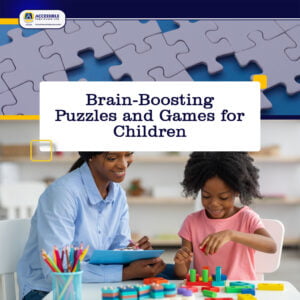Parenting is a beautiful yet challenging journey, and understanding your child’s attention span and learning style can make it smoother. In this post, we’ll delve into the fascinating world of a child’s mind and offer practical parenting tips to navigate their unique attention spans and learning preferences.
Attention span in children refers to the length of time a child can focus on a specific task or activity without becoming distracted or losing interest. Whether it’s listening to a teacher, reading a book, playing a game, or completing a homework assignment. Attention spans can vary significantly from one child to another and tend to evolve as a child grows and matures. Understanding a child’s attention span is important for educators, parents, and caregivers as it impacts how information is absorbed and learning occurs.
Beyond the attention span, another very crucial factor to enjoyable learning and getting it right is the proper understanding of how each child learns. A child’s learning style affects how they absorb, process, and retain information. Understanding a child’s learning style allows parents, teachers, and caregivers to tailor educational strategies to match their preferences. This, in turn, can enhance the child’s engagement and performance in various subjects overall making learning enjoyable for the child.
Here are some common learning styles:
1. Visual Learners: These learners grasp information most effectively when it’s presented in written form or through images. They possess keen observational skills, impressive memory retention, and often harbour a fondness for art
2. Auditory Learners: Thriving on the auditory mode, these learners prefer to hear information. They excel in active listening, demonstrate adeptness in following instructions, and frequently display verbal and musical talents.
3. Reading/writing Learners:
Prefer written or text-based information for comprehension. These learners prefer reading textbooks, taking notes, writing summaries, creating written outlines or reports
4. Kinesthetic Learners: Displaying a physical inclination, kinesthetic learners often excel in activities like sports or dance. They absorb information best through movement and touch. It’s common for them to employ gestures, count on their fingers, or engage in hands-on activities.
While understanding a child’s learning style is crucial for effective education, it’s equally important to make the learning process engaging and captivating. This ensures that children are not just learning, but also enjoying the process. Adapting a child’s learning style to ensure that learning is fun and engaging for kids fosters love for learning.
Below are some tips on how to do this:
Here are eight effective tips on how to make learning fun for young kids:
1. Help Children Discover Interests and Passions:
Encourage children to explore topics that genuinely interest them. Studies affirm that when children have a say in their learning, it becomes more engaging and effective.
2. Make Learning Fun:
Infuse fun into learning through methods like songs, academic games, scavenger hunts, and creative projects. Even seemingly dry subjects can be made engaging.
Incorporate humor or share intriguing stories related to the material being taught. These simple yet effective techniques can enhance the learning experience.
3. Demonstrate Your Own Passion:
Lead by example and express genuine enthusiasm while exploring your own interests and passions. This sets a positive model for your child, showing them the value of lifelong learning.
4. Find Your Child’s Learning Style:
Recognize that children have unique learning styles: visual, auditory, written and kinesthetic. Identifying their preferred style can greatly enhance their learning experience.
5. Give Them a Break During Classes:
Introduce breaks during classes to add variety and make learning more engaging. For example, if the topic is animals, incorporate animal-related activities during the break. Allow them some time to chat with friends, ensuring noise levels are kept in check.
6. Allow kids to play educational games and use educational apps:
Educational apps and electronic games play a valuable role in teaching essential skills and concepts. When used alongside traditional methods, they can enhance a child’s classroom performance.
Utilize educational board games, card games, or apps designed to teach subjects like math, language, or history.
7. Keep lessons short:
Recognize that children’s attention spans are limited, and lengthy lectures may not be effective. Opt for shorter, focused lessons to maintain their engagement.
Shorter lessons help ensure your child remains attentive and absorbs the material being taught, preventing boredom and disinterest.
8. Create a fun learning environment:
Design a visually stimulating and exciting learning space to captivate the child’s interest. Avoid a dull setting that may lead to a lack of engagement. Incorporate objects relevant to the subjects they’re studying to provide a more hands-on and tangible learning experience. Visual aids enhance comprehension and memory retention.
Creating an engaging and enjoyable learning experience for children is an essential aspect of their educational journey. Understanding a child’s learning style and adapting teaching methods to align with their unique preferences can significantly impact their enthusiasm for learning. By tailoring instruction to accommodate different learning styles, parents and educators can make learning not only more effective but also more enjoyable. The paramount objective is to discern what truly captivates their interest. By doing so, we unlock the doors to a world of vibrant, effective learning experiences.
Feel free to let us know other tips and strategies you are using to add fun and excitement to your classroom!
Check out our literature catalogue to discover an array of titles that can help to motivate children to keep turning the pages. It’s time to explore and embark on an enriching literary journey.
Click this link to learn more about us here!
Tips





